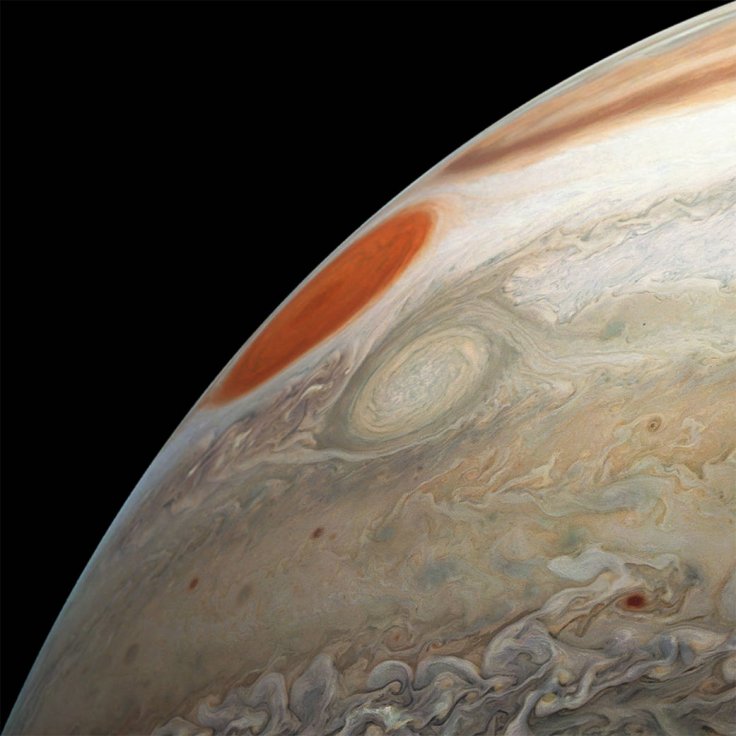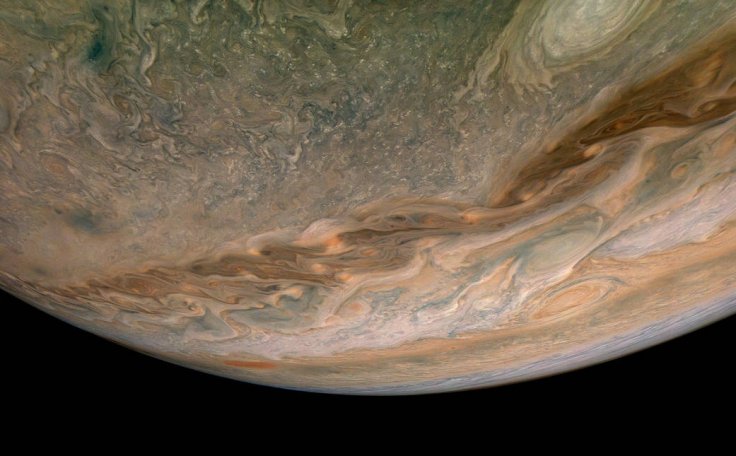
The universe is filled with mysterious and amazing visuals that always excites the astronomers as well as the space lovers. This time NASA's Juno spacecraft, which is orbiting the giant planet Jupiter, has come up with a stunning image of the gas giant.
The spacecraft which was launched on August 5, 2011, has captured swirling clouds in the region of Jupiter's northern hemisphere, which is known as "Jet N4."
JunoCam imager took the raw picture on September 11 at around 8.31 pm PDT when the spacecraft performed its 22nd close flyby of Jupiter.
"Jupiter spins once every 10 hours, and this fast rotation creates strong jet streams, separating its clouds into dark belts and bright zones that stretch across the face of the planet," said NASA adding that "More than a dozen prevailing winds sweep over Jupiter, some reaching more than 300 miles per hour (480 kilometres per hour) at the equator."

As per NASA, citizen scientist Björn Jónsson scientist is the developer of the IMG2PNG software, which batch-converts spacecraft image data to PNG format. So, it should be mentioned that he is the creator of this enhanced-colour image by using the data collected from the spacecraft.
NASA's Juno spacecraft, which was launched from Cape Canaveral Air Force Station in the southern US state of Florida and arrived in orbit around Jupiter on July 4, 2016, took this image when it was about 7,540 miles from the cloud tops at a latitude of 45 degrees.
The motive behind launching the spacecraft and the aim of Juno is to understand the origin as well as the evolution of the gas planet. Juno's main work includes searching for a solid planetary core, measuring water and ammonia, mapping magnetic fields and observing the planet's auroras.
Just a few days ago the spacecraft captured images of Jupiter that showed a dark black entity on its surface. The mysterious image soon became so spooky in nature and it soon went viral on online platforms. But later NASA clarified that the black entity is actually the shadow cast by Jupiter's moon Io.










